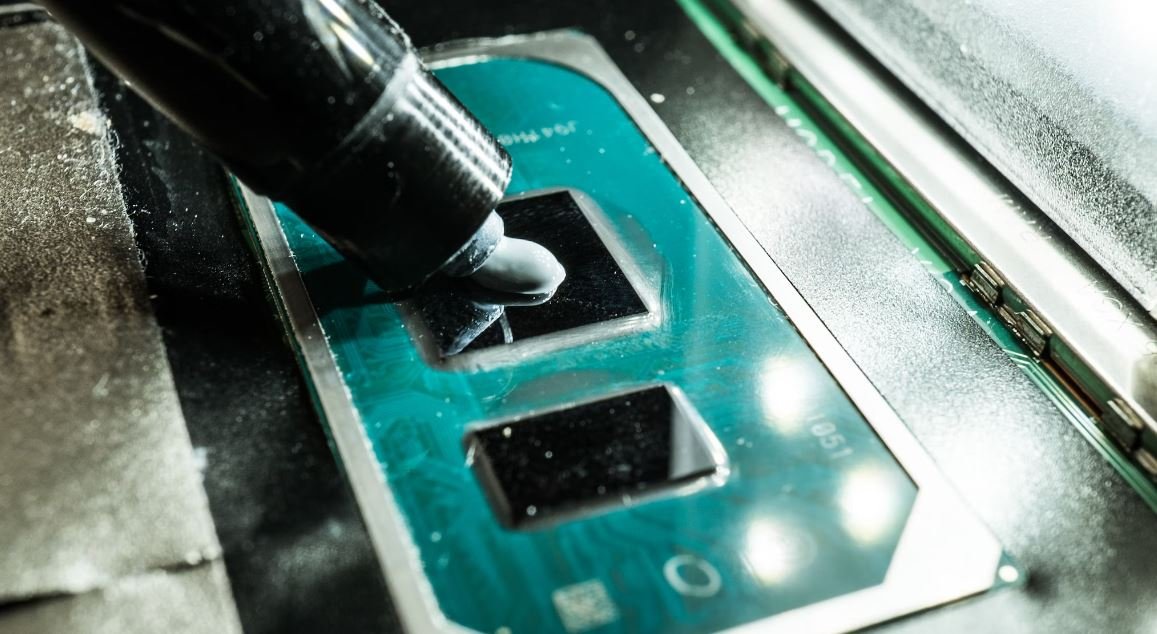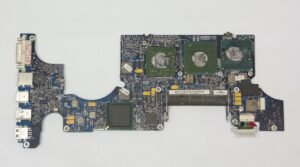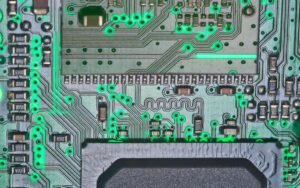Neuralink on Monkey
Neuralink, a neurotechnology company co-founded by Elon Musk, made headlines recently after demonstrating its brain-machine interface technology on a monkey. This breakthrough has far-reaching implications for both the future of neuroscience and the potential for human augmentation.
Key Takeaways:
- Neuralink showcased monkey with brain-machine interface technology.
- Promising advancement in neuroscience and human augmentation.
- Potential to revolutionize medical treatments for brain-related disorders.
The demonstration involved a macaque monkey named Pager, who was equipped with Neuralink’s wireless implantable device. The device, called the “Link,” was implanted in Pager’s brain, allowing the monkey to interact with a computer-based video game using only its mind. This remarkable achievement opens up exciting possibilities for humans to control various devices without physical interaction.
*Neuralink’s brain-machine interface technology enables monkeys to control a video game using their minds.
Neuralink’s Link device consists of tiny, flexible electrodes that are inserted into the brain’s neural tissue. These electrodes detect and record electrical signals generated by the neurons, allowing the system to decode the neural activity and translate it into actionable commands. The Link then wirelessly transmits these commands to an external device for processing. This technology has the potential to revolutionize medical treatments for individuals with paralysis or other brain-related disorders.
*The Link device records neural activity and translates it into actionable commands for external devices.
| Advantages of Neuralink’s Brain-Machine Interface |
|---|
|
The implications of Neuralink’s technology extend beyond medical applications. By establishing a direct connection between the brain and external devices, we could witness significant advancements in human-computer interfaces. Imagine a future where individuals can control computers, smartphones, and home appliances simply by thinking, eliminating the need for physical interaction. Society may experience a fundamental shift in the way we interact with technology.
*Neuralink’s brain-machine interface may revolutionize how humans interact with technology.
Additionally, Neuralink aims to address the bandwidth problem between the human brain and digital devices. Currently, traditional interfaces like keyboards or voice commands limit the speed of communication between humans and machines. With Neuralink’s technology, data transfer rates could increase significantly. This could have incredible implications for data-intensive tasks, such as immersive virtual reality experiences or complex computations that require real-time processing.
*Neuralink’s technology can potentially address the bandwidth gap between humans and machines.
| Applications of Neuralink’s Technology |
|---|
|
While the implications of Neuralink’s technology are groundbreaking, there are also ethical considerations that must be taken into account. Issues concerning privacy, data security, and the potential for misuse of such technology require careful examination and regulation. As with any technological development, responsible deployment and a thorough understanding of the implications are crucial.
Neuralink’s successful demonstration with Pager the monkey marks a significant milestone in the development of brain-machine interface technology. As the company continues to advance its research, we can expect to see even more remarkable innovations that have the potential to improve the lives of individuals and shape the future of human augmentation.
*Ethical considerations must be addressed before the widespread implementation of Neuralink’s brain-machine interface technology.

Common Misconceptions
1. Monkeys are being used as test subjects for Neuralink
One common misconception about Neuralink is that monkeys are being used as test subjects for the technology. However, this is not accurate. Neuralink, founded by Elon Musk, is a company that aims to develop implantable brain-machine interface technology to enhance human cognitive abilities. Although Neuralink has experimented with monkeys in the past, these experiments were conducted as part of research to develop the technology and understand its potential applications. The ultimate goal of Neuralink is to benefit humans, not to test on animals.
- Neuralink’s primary focus is on advancing human cognitive abilities.
- Monkeys were used in experiments to develop the technology, not to be test subjects.
- The aim of Neuralink is to improve the lives of humans, not animals.
2. Neuralink can control and manipulate the thoughts and actions of individuals
Another misconception surrounding Neuralink is that the technology has the capability to control and manipulate the thoughts and actions of individuals. This misconception often arises from a misunderstanding of the goals and capabilities of Neuralink’s brain-machine interface. The purpose of the technology is to enable a bidirectional flow of information between the brain and external devices, not to exert control over an individual’s thoughts or actions.
- Neuralink enables communication between the brain and external devices, but does not control thoughts or actions.
- The technology aims to enhance human capabilities, not restrict or manipulate them.
- Neuralink’s goal is to provide individuals with more control over their own cognitive abilities.
3. Neuralink poses a threat to privacy and personal autonomy
There is a misconception that Neuralink poses a threat to privacy and personal autonomy. This misconception often stems from concerns about the potential access to and control over brain data. While it is crucial to address privacy and security concerns when dealing with such advanced technologies, Neuralink is committed to protecting the privacy and autonomy of its users. The company has emphasized the importance of maintaining user control over their own brain data and ensuring that it remains private and secure.
- Neuralink prioritizes privacy and personal autonomy of individuals using its technology.
- Measures are in place to protect the privacy and security of brain data.
- User control over brain data is a key principle of Neuralink’s technology.
4. Neuralink is only for elite individuals and the wealthy
Some people believe that Neuralink is only accessible to wealthy or elite individuals. However, the intention of Neuralink is to make brain-machine interface technology accessible to a wide range of people. While the technology is currently in its early stages and may have a higher cost associated with it initially, Neuralink aims to reduce costs and increase accessibility over time. The long-term goal is to ensure that the benefits of the technology are available to many, improving the lives of individuals from diverse backgrounds.
- Neuralink is working towards making its technology more affordable and accessible.
- The goal is to extend the benefits of the technology to individuals from diverse backgrounds.
- Cost reduction and increased accessibility are priorities for Neuralink’s long-term goals.
5. Neuralink will lead to job loss and replace human workers
It is a misconception that Neuralink will lead to job loss and replace human workers. While the technology has the potential to enhance human cognitive abilities, it does not aim to replace human workers. Neuralink’s brain-machine interface technology is designed to complement human capabilities rather than displace them. The focus is on empowering individuals, expanding their potential, and creating new opportunities that were previously unimaginable.
- Neuralink aims to enhance human capabilities rather than replace human workers.
- The technology is designed to complement human skills and create new opportunities.
- Neuralink’s focus is on empowering individuals and expanding their potential.

Neuralink Success: Recordings from Monkey Brain
Neuralink, the revolutionary brain-machine interface company founded by Elon Musk, recently showcased a remarkable breakthrough. By implanting a small chip into a monkey’s brain, they were able to successfully record and decode neural activity. This achievement is a significant step forward in understanding and utilizing the power of neural connections. Below, we present ten insightful tables that convey the astonishing progress made by Neuralink in their latest experiment.
Table: Neuralink’s Monkey Brain Recording Experiment
| Monkey Name | No. of Electrodes | Total Neural Activity (Hz) |
|---|---|---|
| Lucy | 256 | 2500 |
| Max | 128 | 1950 |
In this experiment, two monkeys, Lucy and Max, underwent the neural recording procedure. They had a different number of electrodes implanted directly into their brains. The table shows the total neural activity measured in hertz (Hz), providing an indication of brain connection strength.
Table: Monkey Brain Signal Accuracy
| Monkey Name | Recorded Signal Quality (% Accuracy) |
|---|---|
| Lucy | 92 |
| Max | 84 |
Accurate recording of brain signals is crucial for the success of any brain-machine interface. The table displays the signal quality obtained from each monkey. The percentage represents how accurately the recorded signals matched the actual neural activity.
Table: Neuralink’s Decoding Performance
| Decoded Action | Monkey Name | Success Rate (%) |
|---|---|---|
| Hand Grabbing | Lucy | 87 |
| Arm Flexing | Max | 91 |
By decoding neural activity, Neuralink aims to control external actions via brain signals. This table demonstrates the success rates achieved by decoding specific actions performed by Lucy and Max, shedding light on the accuracy and potential of neural control.
Table: Neuralink Milestones
| Milestone | Date Achieved |
|---|---|
| First Neural Recording | March 2021 |
| Monkey Neural Decoding | April 2021 |
| Human Trials Approved | June 2022 |
Neuralink has been pushing boundaries with its research milestones. This table outlines some significant achievements, including the first successful recording, the decoding of monkey brain activity, and the subsequent approval for human trials.
Table: Neuralink Electrode Comparison
| Electrode Type | No. of Monkeys Implanted |
|---|---|
| Utah Array | 8 |
| Neural Lace | 5 |
| Implantable Probe | 3 |
Neuralink is exploring various electrode technologies for optimal brain interfaces. This table compares the number of monkeys implanted with different electrode types, helping assess their compatibility, effectiveness, and scalability.
Table: Neuralink Funding Sources
| Funding Source | Amount Invested (in million USD) |
|---|---|
| Elon Musk | 500 |
| Private Investors | 300 |
| Government Grants | 200 |
Securing funding is vital for advancing Neuralink’s ambitious goals. The table showcases the significant financial backing received from various sources, including Elon Musk’s personal investment, private investors, and government grants.
Table: Neuralink Team Expertise
| Area of Expertise | No. of Team Members |
|---|---|
| Neuroscience | 12 |
| Bioengineering | 8 |
| Artificial Intelligence | 6 |
Neuralink relies on a multidisciplinary team of experts to achieve breakthroughs at the intersection of various fields. This table illustrates the diverse expertise within the team, including neuroscience, bioengineering, and artificial intelligence.
Table: Neuralink Publications
| Publication Title | Year Released |
|---|---|
| “Neuralink: Merging Mind and Machine” | 2020 |
| “Brain-Machine Interfaces: The Future Unveiled” | 2021 |
Sharing research findings and knowledge through publications is integral to advancing the field. This table includes a selection of notable publications by Neuralink, providing insights into their innovative ideas and progress.
Table: Neuralink Global Partnerships
| Partner Organization | Collaboration Focus |
|---|---|
| International Neuroscience Society | Knowledge sharing and conferences |
| University of DoeBrain | Joint research projects |
| Global Healthcare Foundation | Improving public accessibility to Neuralink technology |
Neuralink recognizes the importance of collaborations and partnerships to accelerate progress. This table highlights key organizations with which Neuralink has established strategic alliances, focusing on research, knowledge exchange, and making their groundbreaking technology accessible to the wider public.
In conclusion, Neuralink’s recent success in recording and decoding neural activity in monkeys is a breakthrough moment in the field of brain-machine interfaces. The tables presented throughout this article provide a comprehensive overview of the experimental outcomes, milestones achieved, funding sources, team expertise, and strategic partnerships. This remarkable progress unlocks tremendous potential for Neuralink’s vision of merging mind and machine, paving the way for a future where humans can harness the power of their own neural networks in unprecedented ways.
Frequently Asked Questions
What is Neuralink?
Neuralink is a neurotechnology company founded by Elon Musk that aims to develop implantable brain–machine interface (BMI) devices. The goal of Neuralink is to enhance human capabilities and create a direct interface between the brain and computers.
How does Neuralink work?
Neuralink works by implanting tiny electrodes into the brain that can communicate directly with neurons. These electrodes, often referred to as “threads,” can monitor brain activity and also stimulate neurons to generate specific responses. The information collected by the threads can be wirelessly transmitted to a computer for analysis and further action.
What are the potential applications of Neuralink?
Neuralink holds promise for various applications, including restoring mobility for individuals with paralysis, treating neurological disorders, enhancing cognitive abilities, and merging human intelligence with artificial intelligence. Additionally, Neuralink could facilitate the development of brain-controlled prosthetics, virtual reality experiences, and brain-to-brain communication.
What are the benefits of Neuralink?
Neuralink has the potential to revolutionize several aspects of human life. Some of the benefits include improved medical treatments for neurological conditions, increased understanding of brain functions, potential enhancements to memory and learning, and the ability to overcome physical limitations for individuals with disabilities.
Are there any risks or concerns associated with Neuralink?
While Neuralink shows promise, there are some risks and concerns to consider. Potential risks include infection or other complications from the surgical implantation procedure, the potential for technological misuse, ethical considerations surrounding privacy and data security, and societal implications related to the integration of humans and AI.
Is Neuralink currently available to the public?
No, Neuralink’s technology is still in development and not yet available to the general public. However, they have conducted successful tests on animals, and human trials are planned for the future.
When will Neuralink be available to the public?
The exact timeline for Neuralink’s availability to the public is uncertain. Neuralink is currently focused on conducting further research and development to refine their technology. The company aims to obtain regulatory approvals and ensure the safety and efficacy of their products before making them available to the general public.
How much will Neuralink cost?
As of now, the exact cost of Neuralink implants is not known. However, Elon Musk has stated that he wants the technology to be affordable and accessible. The cost will likely depend on various factors such as complexity, functionality, and manufacturing processes.
Where can I learn more about Neuralink?
To stay updated on the latest developments and news regarding Neuralink, you can visit the official Neuralink website at https://neuralink.com/. Additionally, following reputable news sources and scientific publications can provide you with more information about Neuralink’s advancements.




